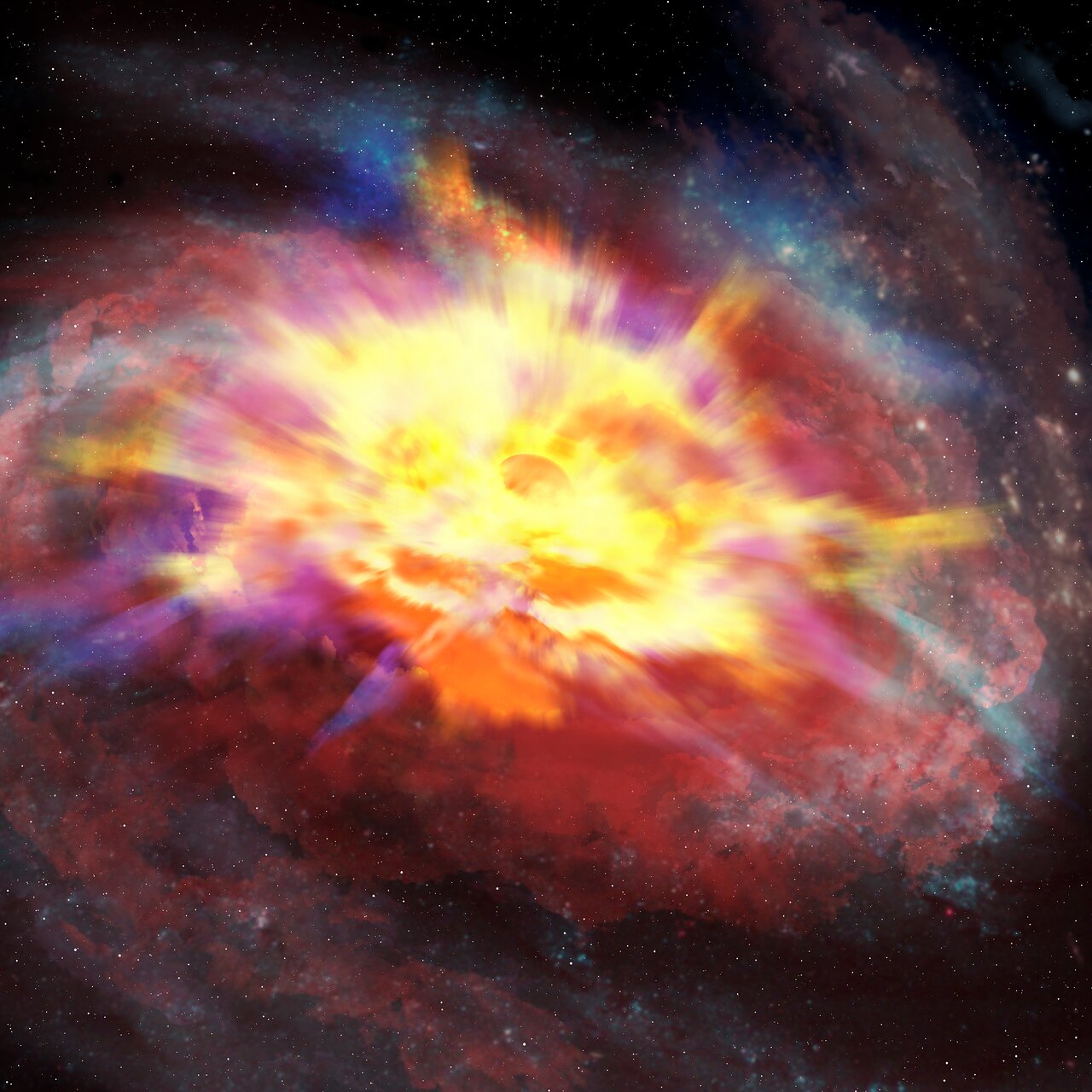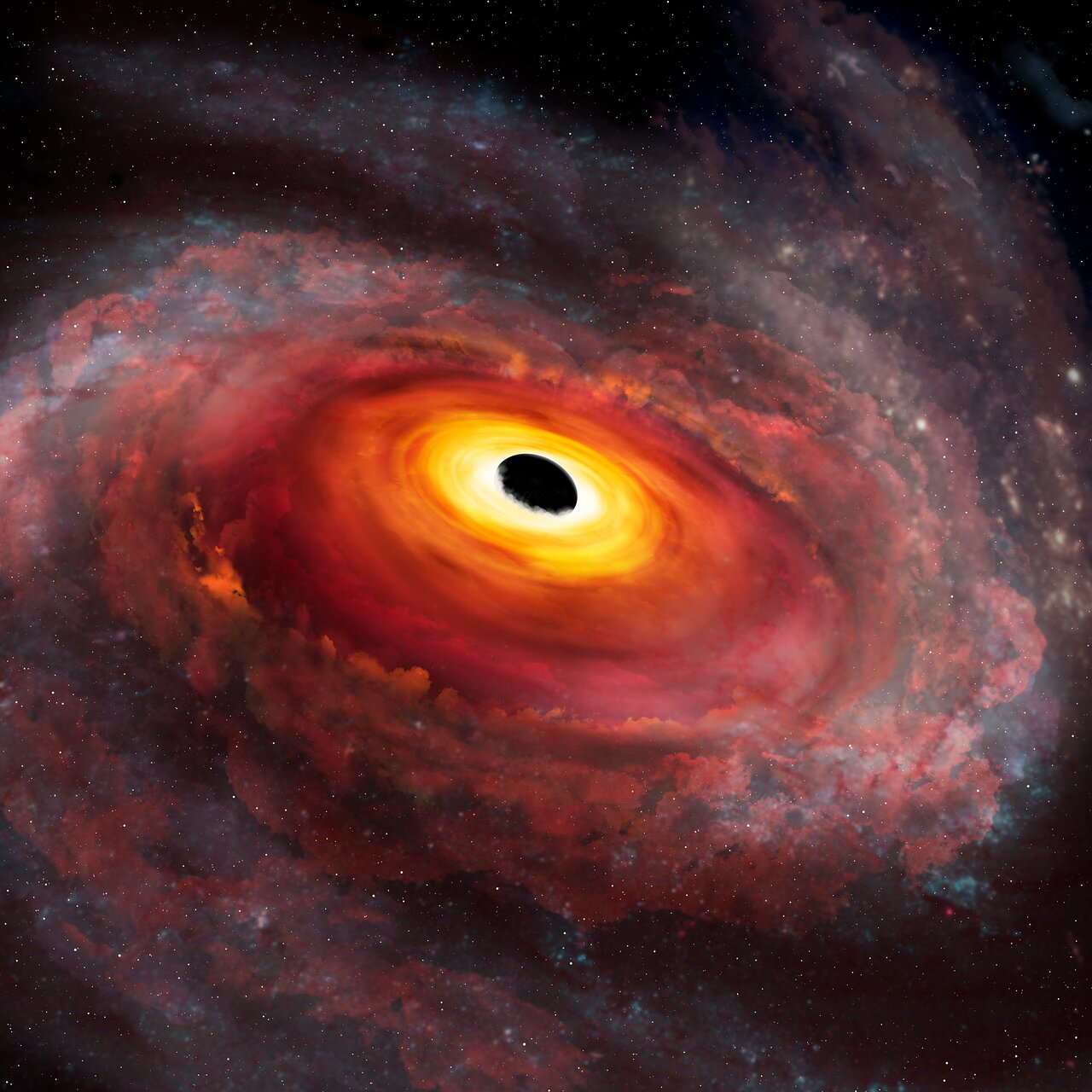Astrónomos detectan el flujo de energía más poderoso proveniente de un cuásar distante


La imagen d ela izquierda muestra la visión del artista sobre la porción central de la galaxia que hospeda al cuásar SDSS J135246.37+423923.5 observado en longitudes de onda ópticas. Vientos portentosos oscurecen nuestra visión, y dejan impresas huellas del flujo energético en lel espectro de SDSS. La imagen a la derecha muestra la misma impresión del artista, per en longitudes de onda infrarrojas, como son observados por el detector del instrumento GNIRS en Gemini. El grueso flujo energético es transparente en longitudes de onda infrarrojas, dándonos una clara línea de visión hacia el cuásar. El espectro infrarrojo produce el desplazamiento hacia el rojo del cuásar, y desde ese marco de referencia, medimos la velocidad de este flujo record.
Créditos
International Gemini Observatory/NOIRLab/NSF/AURA/P. Marenfeld
About the Image Comparison
| Id: | noirlab2009a |
| Release date: | 14 de Abril de 2020 a las 03:00 |
| Related releases: | noirlab2009 |

